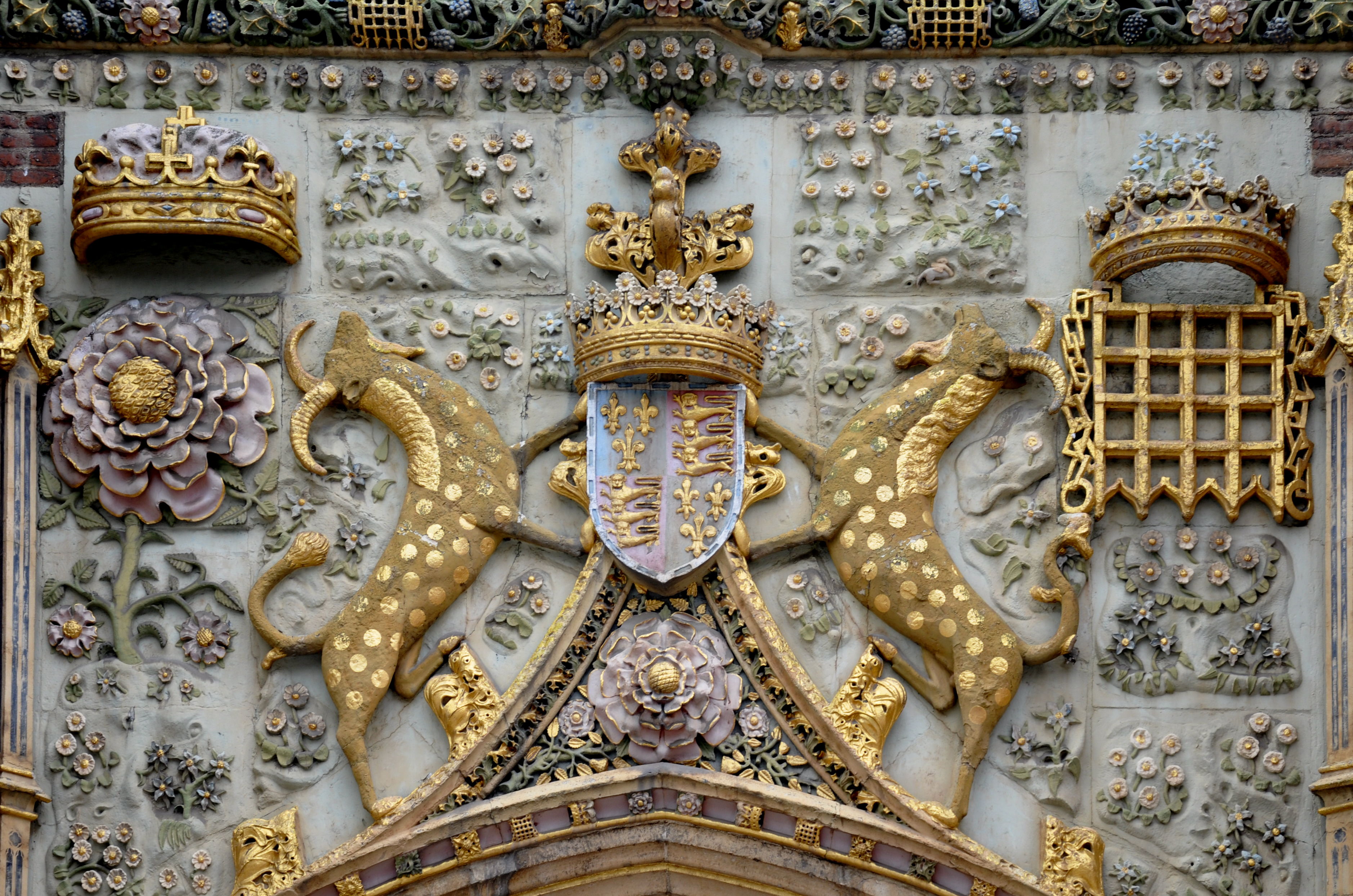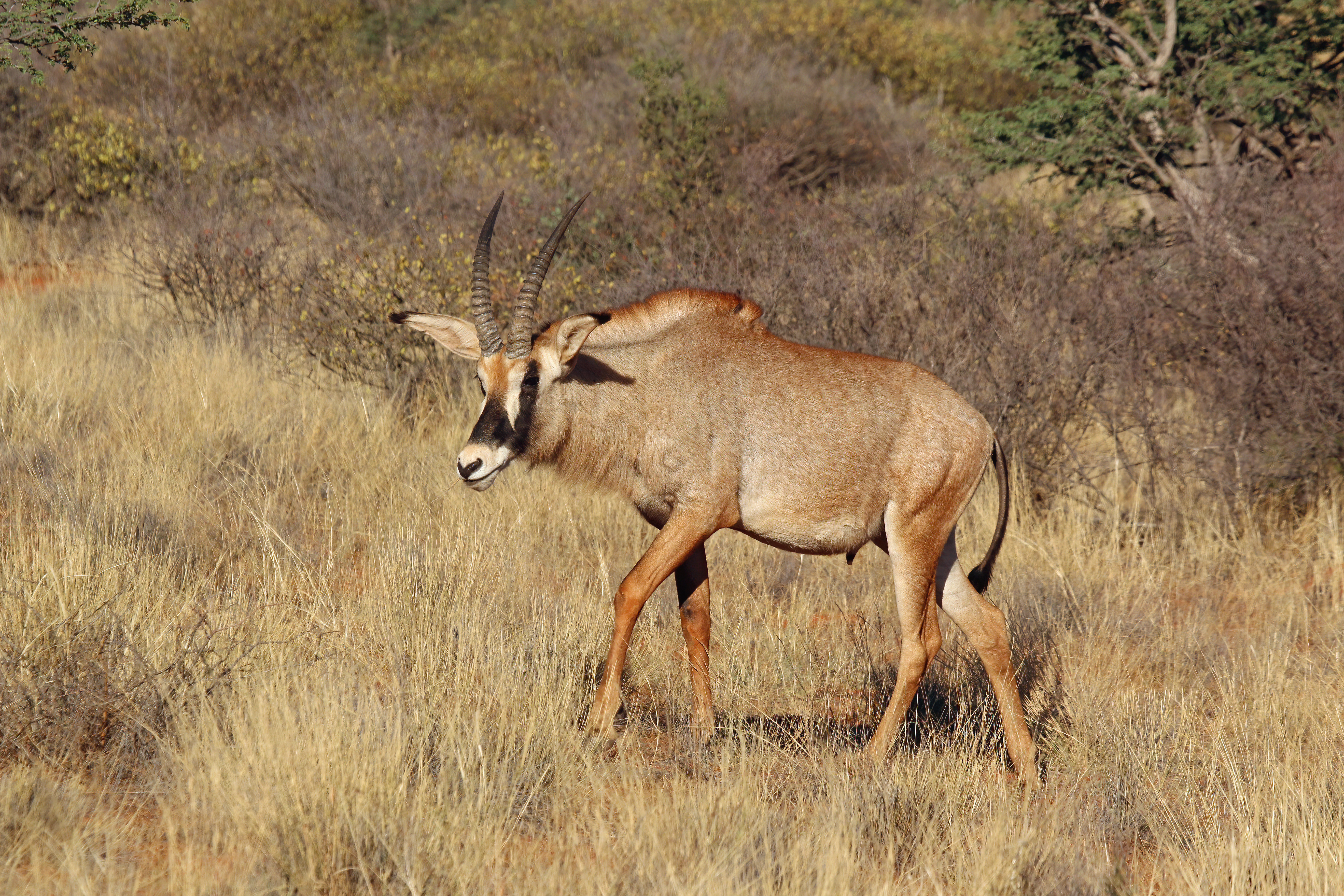Yale (mythical creature) on:
[Wikipedia]
[Google]
[Amazon]
 The Yale or Centicore (
The Yale or Centicore (
 The Yale represents characteristics of both bravery in action and peace in non war times. As such the Yale is among the heraldic beasts used by the British Royal Family. It was used as a
The Yale represents characteristics of both bravery in action and peace in non war times. As such the Yale is among the heraldic beasts used by the British Royal Family. It was used as a
 The Yale or Centicore (
The Yale or Centicore (Latin
Latin (, or , ) is a classical language belonging to the Italic languages, Italic branch of the Indo-European languages. Latin was originally a dialect spoken in the lower Tiber area (then known as Latium) around present-day Rome, but through ...
: ''Eale'') is a mythical beast
A legendary creature (also mythical or mythological creature) is a type of fictional entity, typically a hybrid, that has not been proven and that is described in folklore (including myths and legends), but may be featured in historical accounts ...
found in European mythology Mythologies by region
Africa
*Bantu mythology
Central Africa
*Baluba mythology
* Bushongo mythology
* Kongo mythology
* Lugbara mythology
* Mbuti mythology
East Africa
* Dinka mythology
* Kalenjin mythology
*Lotuko mythology
*Maasai mythology ...
and heraldry.
Description
The Yale is described as anantelope
The term antelope is used to refer to many species of even-toed ruminant that are indigenous to various regions in Africa and Eurasia.
Antelope comprise a wastebasket taxon defined as any of numerous Old World grazing and browsing hoofed mamm ...
- or goat
The goat or domestic goat (''Capra hircus'') is a domesticated species of goat-antelope typically kept as livestock. It was domesticated from the wild goat (''C. aegagrus'') of Southwest Asia and Eastern Europe. The goat is a member of the a ...
-like creature with the tusks of a boar and large horns. These horns possess the ability to swivel in any direction which makes them good for both offensive and defensive attacks.
The name Yale is believed to be derived from the Hebrew
Hebrew (; ; ) is a Northwest Semitic language of the Afroasiatic language family. Historically, it is one of the spoken languages of the Israelites and their longest-surviving descendants, the Jews and Samaritans. It was largely preserved ...
word יָעֵל (Y''ael''), meaning "ibex
An ibex (plural ibex, ibexes or ibices) is any of several species of wild goat (genus ''Capra''), distinguished by the male's large recurved horns, which are transversely ridged in front. Ibex are found in Eurasia, North Africa and East Africa ...
". Other common names this creature parades under is "Eales" or "Centicores".
The Yale was first written about by Pliny the Elder
Gaius Plinius Secundus (AD 23/2479), called Pliny the Elder (), was a Roman author, naturalist and natural philosopher, and naval and army commander of the early Roman Empire, and a friend of the emperor Vespasian. He wrote the encyclopedic ' ...
in Book VIII of his '' Natural History''. He describes the ''Eale'' as a creature found in Aethiopia
Ancient Aethiopia, ( gr, Αἰθιοπία, Aithiopía; also known as Ethiopia) first appears as a geographical term in classical documents in reference to the upper Nile region of Sudan, as well as certain areas south of the Sahara desert. Its ...
: "it is the size of the river-horse, has the tail of the elephant
Elephants are the largest existing land animals. Three living species are currently recognised: the African bush elephant, the African forest elephant, and the Asian elephant. They are the only surviving members of the family Elephantida ...
, and is of a black or tawny colour. It has also the jaws of the wild boar, and horns that are moveable, and more than a cubit
The cubit is an ancient unit of length based on the distance from the elbow to the tip of the middle finger. It was primarily associated with the Sumerians, Egyptians, and Israelites. The term ''cubit'' is found in the Bible regarding ...
in length, so that, in fighting, it can employ them alternately, and vary their position by presenting them directly or obliquely, according as necessity may dictate." After its first mention in this book the creature moved into medieval
In the history of Europe, the Middle Ages or medieval period lasted approximately from the late 5th to the late 15th centuries, similar to the post-classical period of global history. It began with the fall of the Western Roman Empire a ...
bestiaries
A bestiary (from ''bestiarum vocabulum'') is a compendium of beasts. Originating in the ancient world, bestiaries were made popular in the Middle Ages in illustrated volumes that described various animals and even rocks. The natural history ...
and heraldry
Heraldry is a discipline relating to the design, display and study of armorial bearings (known as armory), as well as related disciplines, such as vexillology, together with the study of ceremony, rank and pedigree. Armory, the best-known bran ...
, where it represents proud defense.
Heraldic symbol
 The Yale represents characteristics of both bravery in action and peace in non war times. As such the Yale is among the heraldic beasts used by the British Royal Family. It was used as a
The Yale represents characteristics of both bravery in action and peace in non war times. As such the Yale is among the heraldic beasts used by the British Royal Family. It was used as a supporter
In heraldry, supporters, sometimes referred to as ''attendants'', are figures or objects usually placed on either side of the shield and depicted holding it up.
Early forms of supporters are found in medieval seals. However, unlike the coro ...
for the arms of John, Duke of Bedford
John of Lancaster, Duke of Bedford KG (20 June 138914 September 1435) was a medieval English prince, general and statesman who commanded England's armies in France during a critical phase of the Hundred Years' War. Bedford was the third son of ...
, and by England's House of Beaufort. Its connection with the British monarchy began with Henry VII in 1485. Henry Tudor’s mother, Lady Margaret (1443–1509), was a Beaufort, and the Beaufort heraldic legacy inherited by both her and her son included the Yale.
Yale in the Modern World
Lady Margaret Beaufort was a benefactor of Cambridge
Cambridge ( ) is a university city and the county town in Cambridgeshire, England. It is located on the River Cam approximately north of London. As of the 2021 United Kingdom census, the population of Cambridge was 145,700. Cambridge bec ...
's Christ's College and St John's College and her Yale can be seen on the college gatehouses. There are also a pair on the roof of St George's Chapel in Windsor Castle
Windsor Castle is a royal residence at Windsor in the English county of Berkshire. It is strongly associated with the English and succeeding British royal family, and embodies almost a millennium of architectural history.
The original c ...
. The Yale of Beaufort was one of the Queen's Beasts
The Queen's Beasts are ten heraldic statues representing the genealogy of Queen Elizabeth II, depicted as the Royal supporters of England. They stood in front of the temporary western annexe to Westminster Abbey for the Queen's coronation in ...
commissioned for the coronation in 1953; the plaster originals are in Canada, stone copies are at Kew Gardens, outside the palm house.
In the US, the Yale is associated with Yale University
Yale University is a private research university in New Haven, Connecticut. Established in 1701 as the Collegiate School, it is the third-oldest institution of higher education in the United States and among the most prestigious in the w ...
in New Haven
New Haven is a city in the U.S. state of Connecticut. It is located on New Haven Harbor on the northern shore of Long Island Sound in New Haven County, Connecticut and is part of the New York City metropolitan area. With a population of 134,023 ...
, Connecticut
Connecticut () is the southernmost state in the New England region of the Northeastern United States. It is bordered by Rhode Island to the east, Massachusetts to the north, New York (state), New York to the west, and Long Island Sound to the ...
. Although the school's primary sports mascot is a bulldog
The Bulldog is a British breed of dog of mastiff type. It may also be known as the English Bulldog or British Bulldog. It is of medium size, a muscular, hefty dog with a wrinkled face and a distinctive pushed-in nose.Handsome Dan, the Yale can be found throughout the university campus. The mythical beast occupies two quadrants of the coat of arms of the Yale Faculty of Arts and Sciences (FAS), playfully representing the intellectual curiosity and inquiry of the FAS faculty. The Yale is also depicted on the official banner of the president of the university, which, along with a wooden mace capped by a Yale's head, is carried and displayed during commencement exercises each spring. they can also be seen above the gateway to Yale's 

''The Yale: Heraldic Beast''
(August 20, 1998).
{{Heraldic creatures Medieval European legendary creatures Heraldic beasts Mythological caprids
Davenport College
Davenport College (colloquially referred to as D'port) is one of the fourteen residential colleges of Yale University. Its buildings were completed in 1933 mainly in the Georgian style but with a gothic façade along York Street. The college wa ...
and the pediment of Timothy Dwight College
Timothy Dwight College, commonly abbreviated and referred to as "TD", is a residential college at Yale University named after two presidents of Yale, Timothy Dwight IV and his grandson, Timothy Dwight V. The college was designed in 1935 by James ...
. The student-run campus radio station, WYBCX Yale Radio, uses the Yale as its logo.
An Explanation
Just as most myths seek to explain the natural world so do the descriptions of its creatures. It is believed that the creature that Pliny the Elder
Gaius Plinius Secundus (AD 23/2479), called Pliny the Elder (), was a Roman author, naturalist and natural philosopher, and naval and army commander of the early Roman Empire, and a friend of the emperor Vespasian. He wrote the encyclopedic ' ...
describe in his book as the Yale could have been the result of catching a glimpse of modern day animals. Through his journey he notes the sighting of this creature while on the sub-Saharan African plains. Animals we know to be the Antelope or Water Buffalo inhabit this area and loosely match the description of our dear Yale.


References
* Carol Rose, ''Giants, Monsters, and Dragons: An Encyclopedia of Folklore, Legend, and Myth'', (2000)New York City
New York, often called New York City or NYC, is the List of United States cities by population, most populous city in the United States. With a 2020 population of 8,804,190 distributed over , New York City is also the L ...
: W.W. Norton
W. W. Norton & Company is an American publishing company based in New York City. Established in 1923, it has been owned wholly by its employees since the early 1960s. The company is known for its Norton Anthologies (particularly ''The Norton An ...
. .
* Donna M. Hrynkiw''The Yale: Heraldic Beast''
(August 20, 1998).
External links
{{Heraldic creatures Medieval European legendary creatures Heraldic beasts Mythological caprids